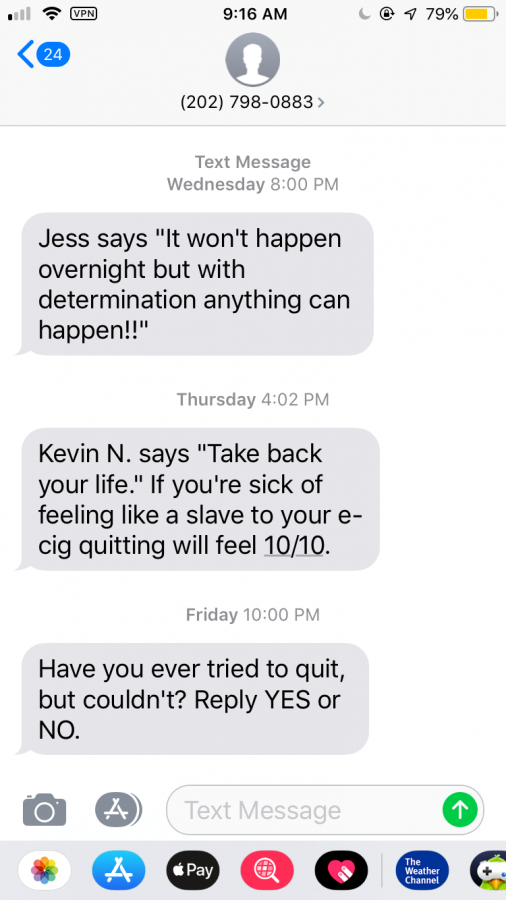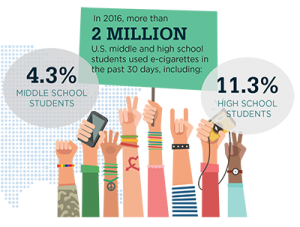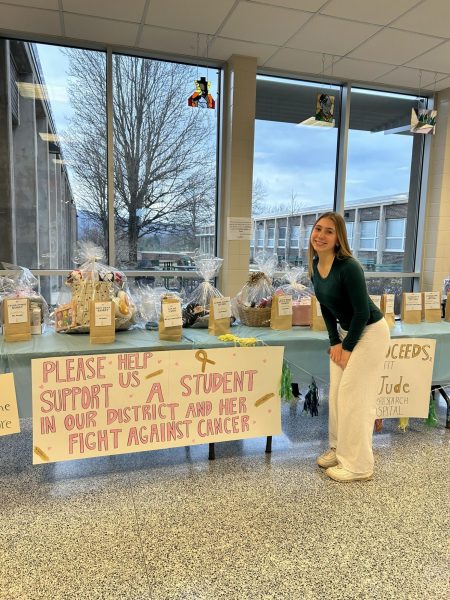A Re-Examination On The Progression Of Teen-Vaping
A deep inhale absorbed into the body and crippled the lungs as he drew again on the unknown nicotine solution travelling through the core of our most valuable resource– You. The numbers continue to increase. The students continue to struggle. The community is now becoming aware. The statistics. The research. The outcry. It’s all getting louder.
The next generation of addicts are on the rise while community leaders and concerned citizens are searching for a solution to end this detrimental cycle that has been part of our world since the beginning of mankind– addiction.
“By the 8th grade, 52% of adolescents have consumed alcohol, 41% have smoked cigarettes and 20% have used marijuana,” according to 2012 research done by the Newport Academy that focuses on teen addiction therapy.
From pipes to cigars and cigarettes to Juuls, America has been confronted with tobacco addiction. When a product is proven to cause horrible side effects a new “solution” is proposed.
“There was a billion dollar settlement with Big Tobacco. That’s where all the warning labels on cigarettes and on chew came from because Big Tobacco marketed it to kids. They lied. They sat in front of Congress and lied for years saying it is not harmful, it doesn’t cause cancer, and they continued to lie,” GLSD Resource Officer and former PA State Trooper Robert Daerr explained. “The initial marketing for E-cigarettes was for smokers to stop smoking to give them what they consider a healthy alternative. I truly believe and I think Congress believes that it is an epidemic. I mean it’s all over the news. It has been marketed to kids, and it’s bad. I mean you see the kid’s everywhere.”
Currently the JUUL Lab company based out of San Francisco is facing a class action lawsuit from both parents and Juul users that allege the company illegally marketed their multi-flavored vape product to minors. The Federal Drug Administration has responded by putting restrictions on the flavorings available in stores where minors are present. The FDA’s goal is to limit the number of minors getting addicted to nicotine products by making them less accessible for purchase, but it is unclear if this solution will truly fix the addiction problem.
“If you talk to smokers it’s all a reflexive habit of having something in their hand, taking it to their mouth. That is the habit to break: not having something. Chew is the same way and that’s also why people chew gum,” GLSD Resource Officer John Zalich added. “My dad was a smoker until he had a stroke. He would carry around a drinking straw that he pushed paper towels into. If he felt the urge he would pull it out and draw on it and get that negative affect.”
According to the Center for Disease Control and Prevention, 70% of all smokers have tried to quit but find it nearly impossible to stop.
“
In an effort to help young smokers and vapers overcome their addiction a new program by the Truth Initiative, a non-profit tobacco control organization, provides a free program that combines positive words of encouragement and powerful statistics sent directly to a user’s phone. This anonymous and free text message program was created by former addicts and teens who have dealt with the struggle of addiction. The idea is to provide daily words of encouragement tailored specifically to age in order to give proper recommendations and special resources. In order to sign up for this very unique program all one has to do is text “QUIT” to (202) 804-9884. The Truth Initiative focuses on informing users about the risks and consequences of different tobacco products.
Similar to the Truth Initiative, the GLSD resource officers all agree that the best solution is a well informed society.
“I think the solution that we all agree on is education. They think they are doing something better by choosing to use that (JUUL) versus the old fashioned smoking. They think they are not inhaling the smoke into their lungs. I think the best solution just like anything else is educating yourself. There really are no pros to it. There aren’t many studies out there for long term effects and you really don’t know what you’re getting. Think about it. Just like everything. When you go to buy a car or you look at shoes or clothes you look at the pros and you look at the cons. There are none to that. There are no pros,” Officer Daerr said.
Another major impact that’s perhaps the biggest cause of teen addiction is peer pressure. According to a study done by USC, a teen is more likely to vape if a friend or relative is already using an e-cigarette.
“I’ve got an older boy that’s at Seton Hill and they are passing it around. You don’t know what you are getting. You are trusting who knows who sitting next to you, and half the time you don’t know who is next to you at these parties and they are passing this and it could have anything in it. I mean you could put anything from fentanyl to regular nicotine or to the juices and flavors they put in there,” explained Officer Daerr.
On Jan. 23, six teenagers at a New Mexico high school were hospitalized after the group of friends became severely ill after vaping marijuana wax. While no permanent injuries were caused, the accident has drawn attention to the serious issue taking place throughout America’s schools. Resource Officer Robert Daerr provided sound advice for all students to consider.
“Stay around positive people. One bad friend in a group of 10 young men or young women can be a poison. One. All you have to do is taint one and two to three to four. Bad decisions. We’ve seen it for how many years as troopers. 25 years of bad decisions. Everybody makes bad decisions, but some are life changing. Even too much of a good thing can be bad,” said Officer Robert Daerr.
With information readily available at the touch of a button, all people should know the serious risks of vaping. It is our responsibility to be informed, to be alert, and to help educate one another. Stand up to addiction.

I grew up here in PA, but spent the last 8 years in CA and just returned to finish out my Senior year at Greater Latrobe. It’s great to be back here--...













